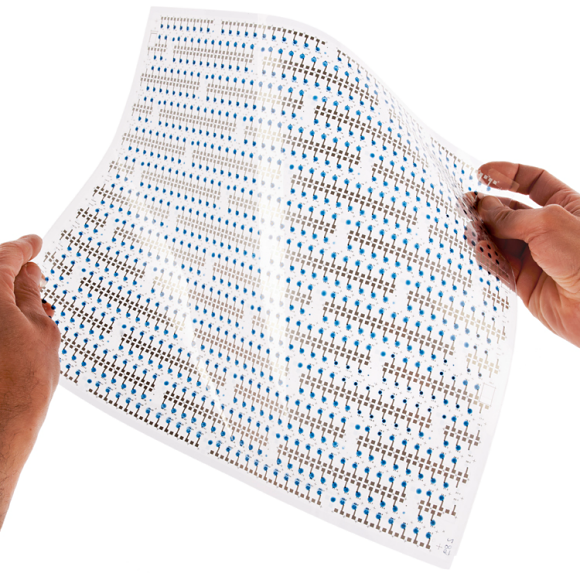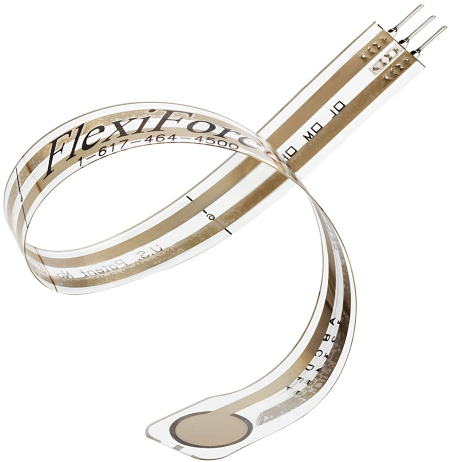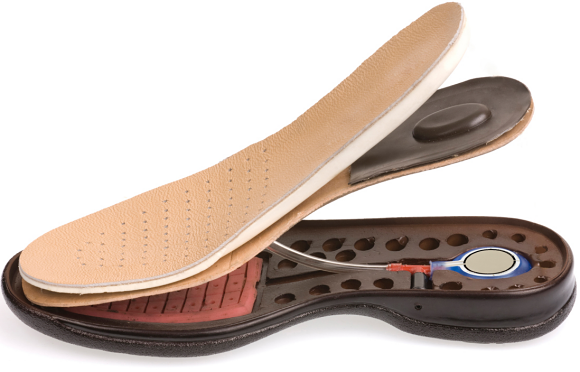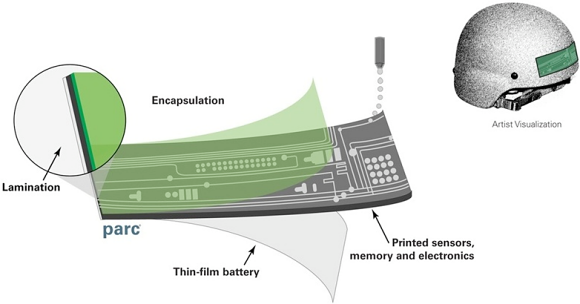
Introduction
Several companies have introduced printed/flexible/stretchable (P/F/S) sensors decades ago however only until recently and driven by the popularity of wearable and Internet of Things (IoT) applications, have P/F/S sensors have seen a significant increase in interest from potential suppliers who wish to exploit these devices. It appears that the P/F/S sensors will be a boon for many suppliers due to the fact that there will be a plethora of startup and small companies developing these high performing, robust, and low-cost sensors. This is in stark contrast to the recent boom in sensor demand for mobile phones where only a small number of "big dogs", e.g. ST Microelectronics, Freescale, and Bosch control the market because of the large volume requirements.
Another important fact, these P/F/S sensor companies are not the traditional players in the sensor game but rather companies whose forte includes materials and chemistry. An excellent example of this is Brewer Science, which has made its mark in the semiconductor materials and equipment market over the past 30 plus years.
The result of continuing research, it is becoming evident that a new type of player is entering the P/F/S sensor arena, similar to Brewer Science. These companies are chemical and materials savvy. Furthermore, to achieve success as a P/F/S sensor supplier, organizations must be well versed in systems integration solutions and have demonstrated competencies in component and packaging integration. Much of this is based on materials technology. Materials, chemical, and fabric companies the likes of Dow Chemical, Monsanto, Gore, and others are and will seriously consider the large opportunity for this technology and subsequently become active participants.
Finally, successful companies in the P/F/S space must add value to their product offerings especially functional integration. It will be insufficient for sensors suppliers to just produce the sensor element. Rather, it will be necessary to include the capability of using small or large area sensor arrays and functional electronics, including some in a P/F/S format. In many applications only some of the solution needs to exist in a P/F/S format and that standard rigid sensors may be successfully integrated into wearables because of their current and increasing falling low prices and small footprints.
It has been reported that the market for fully printable sensors will be worth more than $8 Billion of the $340 Billion flexible worldwide electronics market by 2025. This rapid growth will be driven by a market-and-applications pull strategy and not by a technology-push strategy. Other technology developments, i.e., batteries, memory, communication ICs, etc., will have a direct influence on the rate of adoption of P/F/S sensors. Organizations including the FlexTech Alliance and the Semiconductor Equipment and Materials International are playing major roles to make the development and adoption of P/F/S electronics a success by conducting conferences and workshops and, in the case of the Flex Tech Alliance, providing financial support to organizations developing this technology.
Why P/F/S?
Significant applications for P/F/S sensors will include a wide range of wearable and disposable applications that will exploit several inherent features of these sensors including:
- Small size and low profile
- Low manufacturing cost based on existing batch mode processing with the ability to be scaled to a ultrahigh volume roll-to-roll (R-2-R) manufacturing approach
- Enhanced performance over discrete 3D solutions because of their size and geometry
- Device-to-device uniformity
- Ability to conform to attaching surfaces
- Lower CAPEX requirements for manufacturing
- Ease for integration of other functionalities onto same or layered carriers
Several of these attributes are also shared by microelectromechanical systems (MEMS). However, MEMS typically are not flexible, cannot be manufactured in an R-2-R process, but rather in a batch mode approach, and require significant CAPEX investments, unless of course one uses a silicon foundry for processing the silicon wafers.
This article will address several of the currently available P/F/S sensors, their applications, manufacturing process, and technologies in addition to the work currently being conducted in university and industrial research laboratories worldwide.
Current Developments
Brewer Science
In addition to the integrated temperature-humidity P/F sensor introduced in Q-4, 2014, Brewer Science is developing several additional printed/flexible sensors using proprietary carbon-based resistor technology. This approach incorporates materials that enable change in resistance that is measureable on a millisecond scale and can be applied on a wide variety of nontraditional substrate surfaces.
The carbon-based resistor technology can easily be configured into sensor arrays with potentially hundreds of channels. They can be integrated with digital outputs and across arrays of varying sizes to accommodate small- or large-surface sensing areas.
Brewer Science is currently developing volatile organic compound (VOC) event monitoring P/F sensors. Planned for introduction in early 2016, the VOC sensor exhibits ultra-low power in the pW range and fast response times of approximately 20 ms. Targeted applications include industrial equipment monitoring.
Also under development and expected to be introduced by year end 2015 are force/strain sensors. Demonstrating low-power performance in the pW region and with a gauge factor of 10 and a strain sensitivity of 0.001%, they are expected to find applications in wearable applications. These devices can also be used to sense pressure and force depending on their configuration. They can also be used to measure flow rate for chemical hood applications.
ISORG
An interesting development demonstrating the successful collaboration in the technology transfer process is with ISORG and the research institute CEA-Leti. ISORG is developing a novel P/F imaging sensor capable of measuring visible and near infrared light in wavelengths up to 900 nm.
In addition to the P/S sensor, they are developing a P/F backplane to connect the sensor to signal-processing electronics. This plastic imager is robust and has been designed for lightweight and portable applications. PET plastic foil of 32 cm x 38 cm is currently being used for pilot production that will migrate to a 60 cm x 60 cm format, resulting in thousands of sensors per sheet (see figure 1). Initial applications for the product include medical X-ray imaging, industrial IoT, and large area biometrics applications. Longer term applications include smart watches and biometrics for computer security.
The low-cost and large surface area capability permit whole hand versus fingerprint analysis. Also, the technology is capable of measuring the configuration of veins in the fingers and hand that will provide additional security versus that of a surface fingerprint.

Fig. 1: Current prototypes sheets are 32 x 38 cm. and are screen printed based on a deposition and patterning of liquid materials through a metal mask and are manufactured in an ambient temperature environment. ISORG plans to migrate to 60 x 60 cm. sheets in full production.
Spec Sensors
Spec Sensors' current product line includes sensors that measure CO as well as Ozone, H2S, NO2, SO2, NO, and alcohol. Sensor construction includes a base layer of plastic, a printed conductive ink gas sensitive layer and a laminated plastic top layer and is currently provided in a 15 mm x 15 mm x 3.5 mm format and is reported to shrink to a 10 x 10 x 2.5 mm format by end of 2015. Current applications include residential and commercial indoor/outdoor air quality monitoring and consumer alcohol breath monitoring.
Tekscan
Tekscan's FlexiForce force sensor can measure force between almost any two surfaces and is sufficiently robust to endure most environments (see figure 2). The supplier states that it has better force sensing properties, linearity, hysteresis, drift, and temperature sensitivity than any other thin-film force sensors. The sensor can detect the relative change in force or applied load, rate of change in force, or contact and/or touch. These sensors also allow the user to determine force thresholds and trigger an appropriate action.

Fig. 2: The FlexiForce sensor is an ultra-thin and flexible printed circuit, which can be easily integrated into applications with tight space constraints.
Their standard A201 sensor is constructed of two layers of substrate (polyester film). The high-temp model (HT201) is constructed of two layers of polyimide. On each layer, a conductive material (silver) is applied, followed by a layer of pressure-sensitive ink. Adhesive is then used to laminate the two layers of substrate together to form the force sensor. The active sensing area is defined by the silver circle on top of the pressure-sensitive ink. Silver extends from the sensing area to the connectors at the other end of the sensor, forming the conductive leads.
Applications include medical devices, control and diagnostic tools, robotics, sports and fitness, and consumer products. Their form factor and low power requirements make them ideal for portable devices and wearable devices (see figure 3).

Fig. 3: Shoe insole designed with a standard A401 FlexiForce sensor to measure and analyze force distribution on a patient's foot to prevent falls and assess balance problems.
Future Developments
Research shows that there is not an abundance of companies currently producing P/F sensors. However, a great deal of research is being conducted worldwide for future sensor development. Some of the more interesting activities include:
The Imec Holst Centre developed several P/F sensors including a solid-state ion selective electrode for the monitoring of pH, Cl, Na, and K. Additionally, they are developing sensor labels built on ultra-thin (less than 150-µm thick) polyester foils that can measure humidity, temperature chemicals and gases and include NFC/RFID functionality.
Northeastern University's Nanomanufacturing Center developed a simple and highly sensitive multi- biosensor containing enzyme-immobilized semiconductor single walled carbon nanotubes (SWNTs) for detecting D-glucose, L-lactate, and urea in sweat.
UC San Diego Jacobs School of Engineering Center for Wearable Sensors offers a skin-worn tattoo-based wearable electrochemical device which includes electrolyte and metabolite sensors, biofuel cell and batteries. Temporary tattoos are attractive platforms for fabricating skin-worn devices. Body-compliant wearable electrochemical devices on temporary tattoos couple highly favorable substrate-skin elasticity with attractive electrochemical performance. This technology has been transferred to the spin-our Electrozyme for its wearable hydration monitoring application.
VTT is developing large area nano-photonic chemical sensors under the EU's Photosens Program. Their effort features R-2-R manufacturing. The multi-parameter sensor platform is designed to be disposable and uses advanced technologies including photonic crystals.
Integration Strategies Are Key To Commercial Success
Notably, organizations are aggressively addressing solutions that include a minimum of signal processors and microcontrollers with proprietary software algorithms as major product differentiators. It makes a great deal of sense to judiciously integrate P/F/S-based sensors into P/F/S-based electronics to achieve a low cost and unique design meeting many customer requirements. This poses a potential challenge to the commercialization of P/F/S sensor-based application solutions.
Developers and providers will need to select the optimum integration strategy for each application. The question is will/can these sensor devices be monolithically or heterogeneously integrated with other electronic functions including memory, logic, a battery, and antenna? Also, which of these functionalities should be manufactured in a P/F/S approach versus discrete approach, or more likely, a hybrid approach?
This topic is currently being addressed by several research and commercial organizations including Fraunhofer ENAS, Fraunhofer IZM, and Fraunhofer EMFT through its participation in the EU Interflex Project. Also, the research organization parc is engaged in pursuing the issue of integration of p/f sensors and electronics with traditional "discrete" sensors and electronics including activities funded by DARPA. The objective is to create an integrated sensor tape that includes temperature sensors, accelerometers, and microphones that can be affixed to a soldier's helmet and used to assess post blast conditions (see figure 4).

Fig. 4: An integrated sensor tape that includes temperature sensors, accelerometers, and microphones that can be attached to a helmet.
Summary And Conclusions
Although P/F/S sensors have been available for over three decades, their recent adoption by design engineers is beginning to move at an accelerated rate driven by the growth of wearables. Much of the impetus of developing P/F/S sensors is an outgrowth of research and development undertaken the P/F electronics industry over the past several years.
With the successful development of P/F/S sensors, we are at the beginning of a new wave of opportunity in the sensors industry driven by the growth of IoT plus wearable and disposable applications. It will bring new players into the market whose portfolios are driven by unique materials and manufacturing processes supported by intellectual property.
About the Author
Roger H. Grace is president of Roger Grace Associates (RGA), a Naples Florida-based marketing consulting firm specializing in high technology, which he founded in 1982. His background includes over 40 years in analog circuit design engineering, manufacturing engineering, application engineering, project management, product marketing, and technology consulting. He can be reached at 239-596-8738, [email protected].
Related Stories
Runtastic Selects QuickLogic's Sensor Hub and SenseMe Algorithm Library for Wearables
The NFL is outfitting every player with movement-tracking, data-rich sensors this season
Crossmatch Verifier Sentry Named GSN Biometric Identification Device of 2015